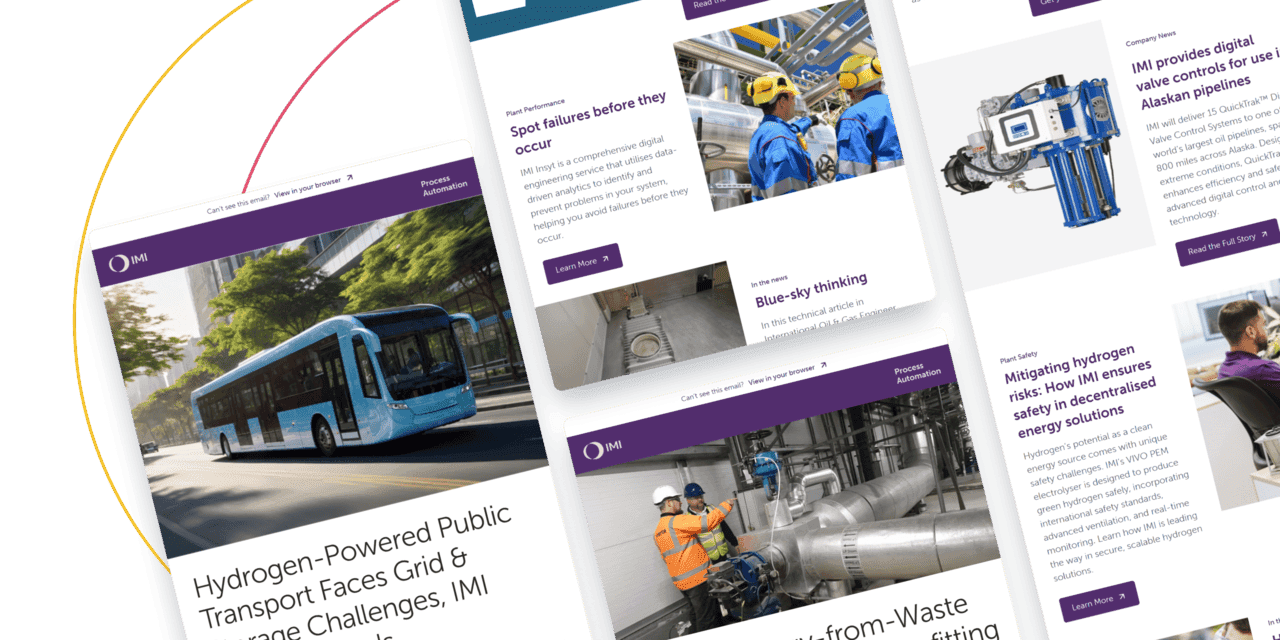Organization Sectors
Organization Sectors
Stay up to date on all the latest Process Automation news
© 2025 IMI plc, All Rights Reserved
© 2025 IMI plc, All Rights Reserved

BLOG

Written By Rob Taylor
June 17, 2024
This ‘filtering’ effect – where technologies move from military to civilian applications – is powerful and should not be overlooked because it demonstrates the value of a robust defence sector, which helps create a better world.
So, what exactly does that process look like?
Marine environments are especially fertile for novel ideas and engineering breakthroughs, if only because they put limits on those responsible for design and development. There is often little space to work with and, in the case of submarines, a need to keep noise levels to a minimum.
Still, these limitations have produced remarkable results. One of the best examples of this can be seen with air-independent propulsion (AIP), which relies on fuel cells to produce power. AIP fuel cells are tanks of stored oxygen and hydrogen, with a third tank of nitrogen used to keep the hydrogen safe. When hydrogen and oxygen are combined, they create electricity. However, this also works the other way round, meaning that if electricity is applied to water, this electrolysis splits water to separate the hydrogen and oxygen. Small Modular Reactors (SMRs) are a safe way of doing this and are more reliable than solar or wind power. This is why leading companies are looking at SMRs to split water into hydrogen and oxygen cells. The origins of today’s SMRs can be traced back to the small nuclear reactors that power nuclear submarines, like those operated by the Royal Navy.Powering these cells involves reacting hydrogen and oxygen to produce water and electrical current. It’s essentially the opposite of electrolysis, allowing non-nuclear submarines to operate without the need to access atmospheric oxygen either by surfacing or through a snorkel. AIP is also far quieter, allowing a vessel to cruise for several weeks with a much lower chance of detection.
The military value of this type of technology should be clear, though the engineering behind it is also influencing work on ‘civvy street.’ Fuel cells are now making their mark in hard-to-abate sectors such as haulage, and the conventional electrolysis used on naval vessels to create breathable air for the crew is now directly involved in decarbonising heavy industry.
In many respects, these advances have been made possible because of the rigorous safety required on submarines. Hydrogen is dangerous if not stored correctly – especially thousands of feet below the ocean – so safety measures are critical to ensure vessels are not left exposed in unfriendly waters.

IMI has been directly involved in this process, having developed pressure regulators and manifolds. Both work to reduce very high-pressure nitrogen tanks from 250 bar to approximately five bar. This five bar is then sent to an IMI distribution manifold that distributes the media to various services. Nitrogen is used as a secondary pipe barrier with double-lined pipes around the hydrogen line. If the hydrogen leaks, it leaks into the nitrogen, which, in turn, renders the gas safe.
Successful demonstrations of this kind are important for growing the hydrogen economy – particularly as safe handling has been a major challenge for industry. They are also why the small modular reactor (SMR) market is now growing rapidly, having first been used on submarines in the 1950s. SMRs are expected to play a critical role in the energy transition, providing flexible low-carbon power where large plants are impractical or unnecessary.
These are promising areas of development, but defence also plays a more visible role in creating a better world. Take deep water sea cables. They link the continents and all the communications that flow between them. It’s not an exaggeration to say the world’s economy would grind to a halt if they were severed or damaged in some way. Hospitals, schools and even governments would fail to operate without these huge connections that snake across the seabed of all major oceans.
Defence plays a crucial role in protecting this critical infrastructure, which research shows is surprisingly vulnerable to undersea accidents or attacks. In March 2024, for example, cables off the coast of West Africa were taken offline due to an underwater rock fall, leaving millions without internet. The cost of this outage is expected to run into the millions.
This incident occurred around the same time as a resurgence in attacks on major shipping lanes that significantly impacted global trade. While attacks have continued, the naval presence in the region has ultimately kept disruption to a minimum.
Has a defence of defence been necessary? Perhaps not as many will recognise its role – not just for keeping nations safe but also as a first responder when humanitarian disaster hits. Yet its reputation is often maligned, and a closer look is needed to judge its contributions fairly.
In some sense, it is unfortunate that so much of global R&D spending is devoted to nations gaining an advantage over adversaries. But the need for strong deterrents has never been more apparent in an increasingly volatile and contested world. And those deterrents are only effective when engineers are free to do their best work.
Defence creates a better, safer world. We should not lose sight of that.
Stay up to date on all the latest news and articles from IMI.

Stay up to date on all the latest news and articles from IMI.


Stay up to date on all the latest news and articles from IMI.
